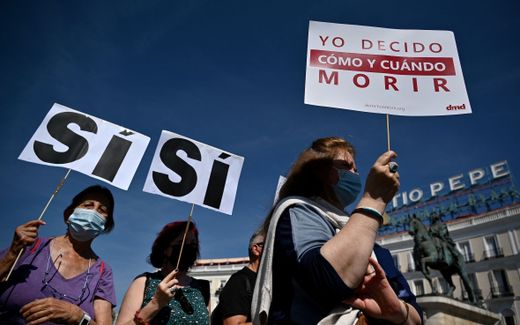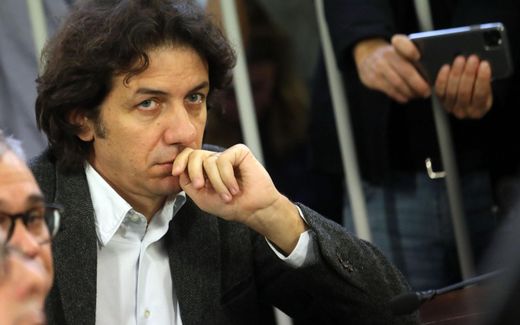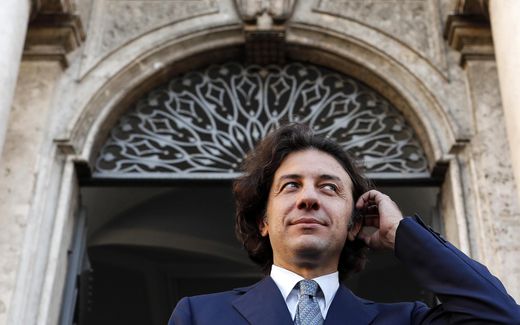Italian politicians can no longer avoid euthanasia debate
10-08-2022
Southern Europe
Aart Heering, RD

Pro-euthanasia activist Marco Cappato at his trial for assisted suicide. Photo EPA, Matteo Bazzi
Southern Europe
At the start of the election campaign for September 25, Italian political parties are confronted with a theme they would rather ignore: euthanasia.
For twenty years, the question for a judicial regulation of euthanasia has existed. Still, the Parliament has not listened up till now. A controversial case of assisted suicide – the support for a terminal patient from Italy to a clinic in Switzerland – has now confronted political parties in Italy.
The current euthanasia debate started in 1999 when the father of Eluana Englaro requested the Court termination of the therapy of his daughter. The young woman had been in a vegetative state for seven years. She had had a severe traffic accident, had no chance of recovery and was kept alive with artificial feeding. A long judicial and political debate followed. Opponents argued that termination of treatment was impossible because Eluana did not express that wish herself.
In the end, the Court of Appeal in Milan permitted in 2008 to end the "unreasonable, therapeutic persistent" treatment. Since then, hundreds of thousands of Italians have signed a so-called biological testament, expressing the wish to avoid further medical treatment if they would end up in the same situation as Eluana.
Crisis
The debate was sparked again in 2017. At that time, human rights activist Marco Cappato supported a popular DJ who had become paralysed and blind after an accident. The DJ then went to a Swiss clinic for euthanasia. According to the criminal code, Cappato provided "suicide assistance". Therefore, he could be imprisoned for five to twelve years. However, Cappato did not keep silent. He reported himself to provoke a trial process.
The case went to the Constitutional Court, which asked the Italian Parliament in vain to implement euthanasia legislation quickly. After two years, the CourtCourt itself drafted a regulation. In it, assistance for suicide is not illegal as long as it fulfils four requirements: the free will of the patient, terminal disease, unbearable suffering and the dependency on medical equipment. Cappato's case met all four, so he was acquitted.
Last March, the Italian Chamber of Representatives finally accepted a "law on the end of life". In it, the ruling of the CourtCourt was taken over, even though both the leftist and rightist political parties thought this was not sufficient.
But because of the crisis in the Italian government, which started last month, the Senate could not look at the proposal. That means the whole parliamentary procedure will have to happen again after the elections.
In the meantime, Cappato guided a 69-year-old woman last week. She was terminally ill because of lung cancer and went to Switzerland. In a video message published after her death, she declared that she would rather have died at home, with her husband and daughter, but that this was impossible because of Italian legislation. Cappato faces a new trial because this case did not meet the requirement of dependency on medical equipment.
Regulation
Thus, the next Parliament will also have to look at the euthanasia issue. In addition, it is – especially in Italy – essential that the Roman Catholic Church takes a more lenient stance. In 2006, Cardinal Ruini, the President of the Conference of Bishops then, refused to say a Mass for a man who had euthanasia.
But his current successor, Cardinal Zuppi, declared last week that he would do so, even though he opposes euthanasia. And the influential Jesuit magazine Civiltà Cattolica expressed a wish for quick judicial legislation. One never knows; maybe it will be implemented sometime anyways.
This article was translated by CNE.news and published earlier by Dutch daily Reformatorisch Dagblad on August 9)
Related Articles





